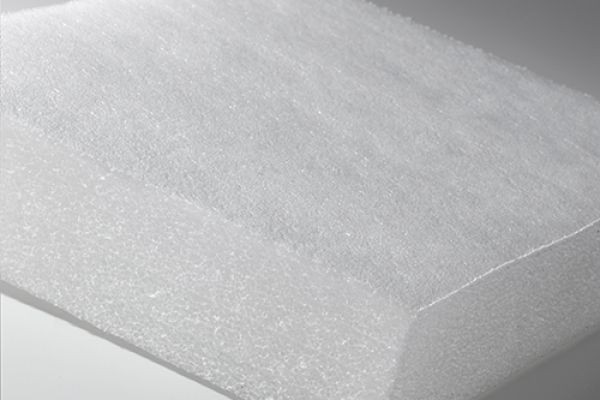The cross-linked polyethylene market has experienced robust growth in recent years, driven by its versatile applications across industries such as construction, automotive, healthcare, and packaging. As a high-performance thermoplastic, cross-linked polyethylene (often abbreviated as XLPE) distinguishes itself with superior thermal stability, enhanced mechanical properties, and chemical resistance. These attributes make it a material of choice in sectors requiring reliable performance under challenging conditions. Consumer awareness about safety and durability continues to spur demand, while the ongoing trend toward lightweight yet robust materials in manufacturing and infrastructure further underpins its market expansion.
Market Drivers and Growth Catalysts
Several key factors are propelling the growth of the cross-linked polyethylene market:
-
Expanding Industrial and Infrastructure Applications
The adoption of XLPE in piping systems—especially for hot and cold water distribution—has grown substantially due to its corrosion resistance, easy installation, and long service life. In addition, the material is increasingly used in insulation for electrical cables, contributing to safer and more durable power transmission infrastructure. -
Sustainability and Regulatory Compliance
As industries face stringent environmental and safety regulations, XLPE stands out by offering low toxicity, higher purity, and recyclability compared to alternative polymers. Its lower environmental footprint, particularly when compared to metals or conventional plastics, aligns well with sustainability goals and green building standards. -
Automotive Lightweighting
The push for fuel efficiency and electric vehicle (EV) performance has encouraged automakers to replace heavy metallic and traditional plastic components with lightweight alternatives. XLPE components help reduce vehicle weight and maintain structural integrity, boosting EV range and efficiency. -
Healthcare and Medical Devices
In the healthcare sector, XLPE is valued for its sterility, resistance to chemicals, and biocompatibility. Its use in tubing, medical containers, and sterilization equipment contributes to safer and more effective medical practices.
Market Segmentation
The XLPE market can be segmented across multiple dimensions:
-
By Application
-
Piping & Fittings: Dominates a significant market share due to long-term durability and low maintenance needs; widely used in residential, industrial, and municipal infrastructure.
-
Electrical Insulation: Growth in construction and energy sectors has driven demand for XLPE-insulated cables, particularly in high-voltage and underground projects.
-
Automotive Components: Lightweighting initiatives and EV rollouts are key growth factors here.
-
Medical & Healthcare Products: Includes sterile packaging, tubing, and device fabrication.
-
-
By Cross-Linking Method
-
Chemical Cross-Linking (e.g., peroxide): Offers controlled properties but may depend on chemical initiators.
-
Physical Cross-Linking (e.g., irradiation): Provides uniform cross-link density and is often preferred where purity is critical, such as in medical applications.
-
-
By Region
-
Asia-Pacific: Leads growth, driven by infrastructure development, urbanization, and booming automotive production.
-
North America & Europe: Emphasize high-quality standards and sustainability, with growth in specialized applications like healthcare and EVs.
-
Middle East & Africa, Latin America: Seeing emerging demand in construction and energy projects, with untapped growth potential.
-
Competitive Landscape and Key Players
The cross-linked polyethylene market features a blend of global chemical giants and regional manufacturers, each competing on innovation, product quality, and application specialization. Key players typically invest in R&D to enhance cross-linking methods—improving performance characteristics like thermal resistance, flexibility, and purity. Partnerships with end-users in construction, automotive, and healthcare sectors also help drive tailored product development and ensure market alignment.
Strategic moves like capacity expansion, acquisitions, and technology licensing are common. Companies often collaborate with equipment providers to deliver bundled solutions—combining material and machinery aimed at streamlined adoption in cable, piping, or automotive systems.
Challenges and Restraints
Despite its benefits, the XLPE market faces several challenges:
-
Production Complexity and Cost
Cross-linking processes, such as irradiation or peroxide methods, involve specialized equipment and safety protocols, elevating production costs compared to conventional polyethylene. -
Recycling Limitations
Though more sustainable than some alternatives, XLPE's cross-linked structure complicates recycling. Mechanical reprocessing is limited, and chemical recycling remains in early development phases—raising concerns about end-of-life management. -
Competition from Alternatives
In certain applications, alternative materials like polypropylene, PVC, or metal alloys may compete on cost or processing familiarity, particularly in price-sensitive markets.
Future Outlook
Looking ahead, steady expansion in infrastructure, automotive electrification, and healthcare is expected to sustain demand for XLPE. Innovations aimed at improving recyclability and lowering production costs—such as advanced cross-linking catalysts or greener irradiation technologies—could further broaden its adoption. Growth in emerging markets, especially in Asia, Latin America, and Africa, offers significant upside as urbanization and industrialization continue.
Regional regulatory emphasis on safety, energy efficiency, and environmental performance will likely drive adoption of high-quality XLPE products. Similarly, increasing investments in smart grids, sustainable construction, and EV infrastructure are expected to open new application avenues.
Conclusion
The market landscape for cross-linked polyethylene presents a compelling blend of growth opportunities and strategic challenges. Its performance advantages—thermal stability, durability, chemical resistance, and lightweight nature—problem-solve across piping, electrical, automotive, and medical sectors. To capitalize on this momentum, industry stakeholders must continue innovating, enhancing production efficiency, and addressing recyclability. With the right focus, XLPE stands poised to play a vital role in next-generation materials and sustainable development trajectories.

